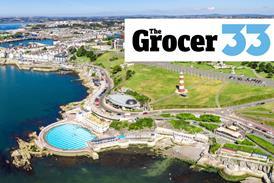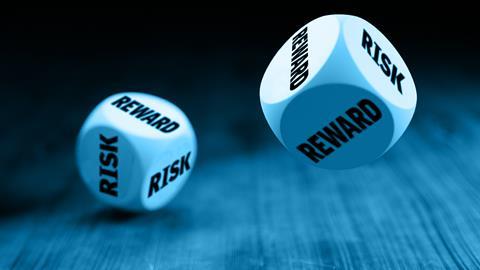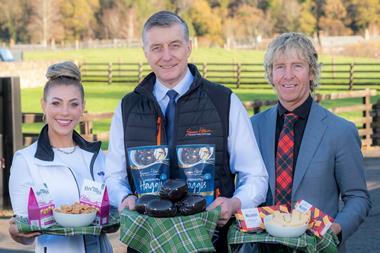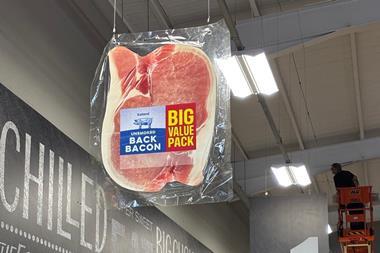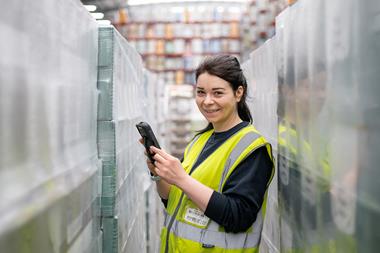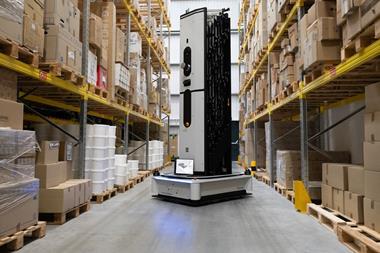In 2025, it’s more crucial than ever for brands and retailers to balance the opportunities afforded by innovation alongside maintaining a positive sales performance – and it’s a tricky balance to achieve. In the first in our series exploring how brands and retailers can unlock value in 2025, we outline the considerations needed to avoid unintended consequences and ensure sustainable growth.
With dampened consumer demand, market volatility and supply chains dogged by economic and geopolitical disruptions, the pressure on brands and retailers to optimise growth has never been fiercer.
And against this backdrop, staying dynamic is essential.
But in today’s complex ecosystem, with so many potential avenues for growth vying for attention, the choice as to where to invest for growth has become far more challenging.
“The proposition for brands and retailers is now multi-dimensional; from the ways they engage with end-consumers, to the channels they put their product through, to packaging changes and sustainability agendas… there are so many more elements to consider when developing a brand proposition and so many more levers they can pull,” outlines Simon Harden, head of strategy for consumer and retail at KPMG.
Pursue too many avenues for potential growth at one time, though, and there could be unintended consequences, with a dilution of brand proposition as well as profit, rather than meaningful success.
So, how can brands and retailers avoid any innovation paralysis and ensure they win through, making bold intentional choices about where to focus their efforts?
Tackling trade-offs
A relentless focus on innovation has always been critical to survival in food and drink’s notorious high-stakes, low-margin business. Even more so amid the tumult of the last few years.
It’s why seemingly every week brings a disruptive new product launch, a provocative campaign or – as was the case with news of Tesco’s rapid scale-up of its Marketplace platform in January – a brand new channel play.
But with each new launch or initiative, there’s a balancing act behind-the-scenes, points out Harden.
“There are some really exciting opportunities to grow but each comes with trade-offs,” he explains. Take personalisation as an example. “The grocery industry knows more about its customers and their missions than ever before, so we want to drive greater personalisation in their products, promotions and prices. But that’s often expensive and complex to achieve. So yes, they want to maximise customer outcomes, but they also want to optimise conditions for colleagues, reinvest in price and deliver a healthy profit. There’s a trade-off.”
“As some of the fastest-growing brands and retailers in UK grocery have demonstrated, branching into new territory isn’t always worth the trade-off required”
These trade-offs exist everywhere you look. A flashy experiential retail concept may drive additional footfall, but it could also come with a hefty cost. A packaging refresh may spark new engagement but require the overhaul of existing production lines. Or selling through a new channel may attract a brand-new tranche of consumers, but require significant investment in new distribution networks or tech.

Mastering the balancing act
As some market-leading brands and retailers in UK grocery have demonstrated, branching into new territory isn’t always worth the trade-off required.
When Aldi UK made the decision to axe its click & collect service in August 2023 – marking its final exit from the online channel – it did so after having concluded the trade-off simply wasn’t worth it. Having been tempted to trial ecommerce during the pandemic, the retailer ultimately realised it was too much of a distraction from its highly successful lean operational model in bricks-and-mortar. As a spokesman told The Grocer at the time: “One of the ways we keep our prices low for customers is by running the most efficient supermarket business in Britain. As a result, we’ve made the decision to bring our click & collect service to an end, so we can focus on doing just that.”
Primark, however, choose a different approach. Recognising the difficulties of making a viable move online during the pandemic, the fashion retailer stood firm and resisted trialling ecommerce until 2023. By then, Primark had weighed up the cost and complexity associated with home delivery, allowing for a gradual introduction of click & collect for its largest category, womenswear, and children. It meant the retailer could pursue a ’test and learn’ approach for online while continuing to support its physical store offer, thereby minimising the business’ exposure to risk.
Read more in the series:
-
The ‘virtuous circle’: how to deliver personalisation and privacy
-
Curiosity, culture, quality: how brands and retailers can win with data
It was a similar scenario at M&S when it decided to radically restructure its business back in 2016. The controversial plan saw the retailer close multiple high street branches while simultaneously expanding its food and premium fashion footprint. The plan delivered some short-term blows to M&S’ hard-won brand equity – with many critical of its disappearance from town centres – but the leadership team persisted. Nearly a decade on, it was named the UK’s fastest-growing supermarket, with that same streamlined strategy, built around its most profitable revenue arms, well and truly paying off – despite the early scepticism.
Meanwhile, Coca-Cola Europacific Partners’ (CCEP’s) growth strategy in recent years has been underpinned by a willingness to continuously scrutinise and rationalise its portfolio to focus on core SKUs. “We continuously assess our portfolio through the lens of shopper needs, ensuring every brand and SKU serves a clear purpose,” says vice president for commercial development Rob Yeomans. “While some lower-selling SKUs may be essential for specific shopper missions or occasions, others may no longer justify their shelf space. By rationalising our range, we can simplify choice, improve availability of core lines, and ensure we’re offering the most relevant products to meet shopper demand.”
Such scrutiny can validate the decision to forge ahead with a new area of innovation, too.
At Itsu Grocery, which has rapidly grown its product portfolio in recent years, each addition undergoes a rigorous assessment first, explains joint managing director Aidan Tyers.
“Each launch is carefully analysed and timed to complement and not cannibalise our existing ranges, attracting new shoppers or occasions,” he says. “We also ensure our supply chain, marketing, and retail partnerships can support expansion without overstretching resources. Growth must be exciting, sustainable, and additive to our brand, as well as fundamentally filling a consumer need state.”
Whatever the final decision, what’s critical is to avoid being caught unawares.
For example, when one large soft drinks brand decided to unveil its more economic and eco-friendly bottle shape last year, they failed to factor in the strength of consumer backlash to how the design slightly reduced pack size, with allegations of shrinkflation, and to a new smoother bottle cap that was harder to handle.

Designing an evaluation framework
To avoid unintended consequences and ensure each investment decision is underpinned by a clear sense of strategy, brands and retailers need to design end-to-end frameworks that allow them to define, measure and evaluate the impact of each piece of innovation – and any trade-off required. There are three clear ways in which they can do so:
● Put in place clear metrics against which to understand each scenario so you know what you’re choosing between, suggests Harden. “If you’re balancing customers, colleagues and costs, then give those a proper definition and use data to measure them. You have to make sure you’ve got a sophisticated enough understanding of those to appreciate the trade-offs.”
● Make use of tech enablers. There are now a suite of tools and technologies out there that can help to map out scenarios and make more evidence-based decisions about where to invest resources, as well as optimise value creation. It’s why artificial intelligence is already feeding into new product development to pre-empt feedback, and customer insights are being used to underpin new brand propositions.
● Be prepared to sit down and have difficult conversations. Once armed with this information, leadership teams at brands and retailers then need to be willing to discuss in-depth which trade-offs to accept – and which can’t be justified. “You can’t have everything,” says Harden. “You have to make tough decisions on what a venture is worth vs. what it could cost the business. People don’t like having those conversations, they’d rather have it all. But something has to give, in order to achieve sustainable growth.”
Decisiveness here is critical, says Harden. “Whilst it’s key that leaders take into consideration all of the relevant information available to them before executing a decision, pace matters too.
“Allowing too much time to pass before acting may have its own consequences - for example, a competitor going to market ahead of your product launch. Being decisive once the right information is available is key to maximising your upsides whilst inspiring confidence from your team that you know the right path to take”.
With so much to catch the eye of brands and retailers striving to achieve growth, it can be all too tempting to act first and think later. But as the lessons of high-profile industry players have demonstrated, a less is more strategy, underpinned by careful deliberation of where long-term success lies, is a far more effective way to unlock the value everyone is dreaming of in 2025.
To learn more about how KPMG’s experts could help your business, visit: KPMG Consumer
Or contact:
Linda Ellett, partner, head of consumer, retail and leisure: Linda.ellett@kpmg.co.uk, or
Simon Harden, partner, head of strategy for consumer and retail: Simon.harden@kpmg.co.uk

Risk vs reward: how brands and retailers can grow without the gamble in 2025
- 1
 Currently reading
Currently readingRisk vs reward: how brands and retailers can grow without the gamble in 2025
- 2
- 3
- 4
- 5
- 6






